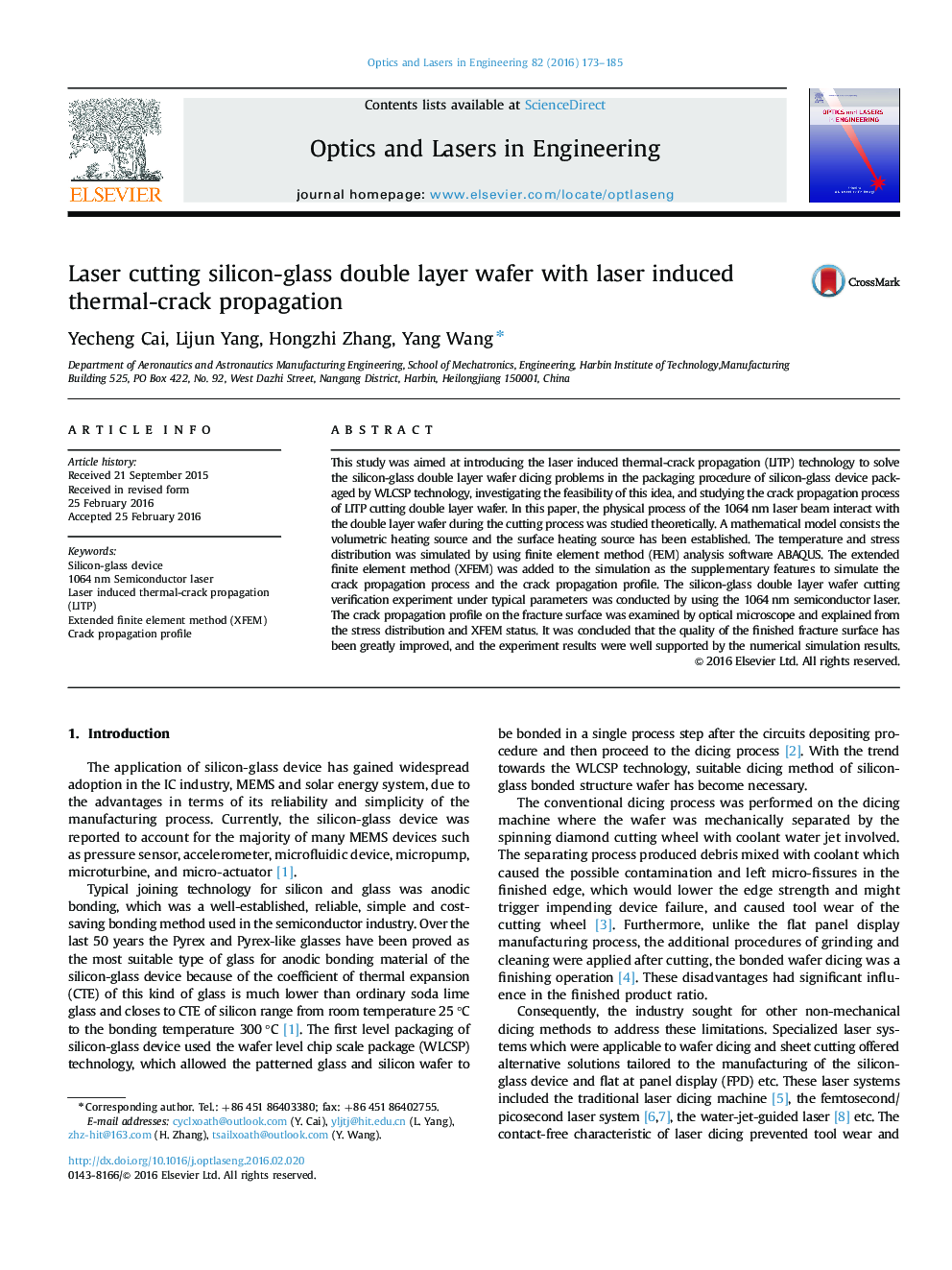| کد مقاله | کد نشریه | سال انتشار | مقاله انگلیسی | نسخه تمام متن |
|---|---|---|---|---|
| 735098 | 1461711 | 2016 | 13 صفحه PDF | دانلود رایگان |
• Using 1064 nm laser with laser induced thermal crack propagation (LITP) technology to solve the cutting problems of the silicon-glass double layer wafer.
• Glass layer and silicon layer is separated simultaneously during laser scanning.
• The mathematical model consist the volumetric heating source and the surface heating source has been established and testified.
• The XFEM analysis perfectly explains the mechanism of the crack propagation process.
This study was aimed at introducing the laser induced thermal-crack propagation (LITP) technology to solve the silicon-glass double layer wafer dicing problems in the packaging procedure of silicon-glass device packaged by WLCSP technology, investigating the feasibility of this idea, and studying the crack propagation process of LITP cutting double layer wafer. In this paper, the physical process of the 1064 nm laser beam interact with the double layer wafer during the cutting process was studied theoretically. A mathematical model consists the volumetric heating source and the surface heating source has been established. The temperature and stress distribution was simulated by using finite element method (FEM) analysis software ABAQUS. The extended finite element method (XFEM) was added to the simulation as the supplementary features to simulate the crack propagation process and the crack propagation profile. The silicon-glass double layer wafer cutting verification experiment under typical parameters was conducted by using the 1064 nm semiconductor laser. The crack propagation profile on the fracture surface was examined by optical microscope and explained from the stress distribution and XFEM status. It was concluded that the quality of the finished fracture surface has been greatly improved, and the experiment results were well supported by the numerical simulation results.
Journal: Optics and Lasers in Engineering - Volume 82, July 2016, Pages 173–185
